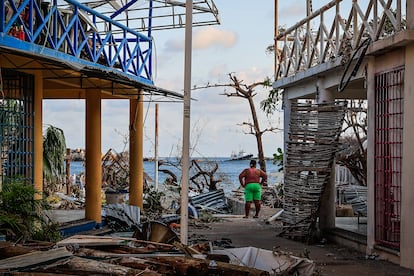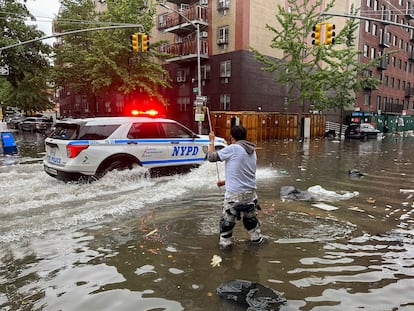Do countries actually have the money to fight climate change?
The public sector’s ability to finance its share of annual investment needed to address climate change issues by 2030 appears technically possible

“…the real test when it comes to climate change is not merely whether we can describe the worst potential outcomes. The real test is whether we are willing to pay an appropriate cost to protect ourselves from them.” (Robert Rubin in The Yellow Pad: Making Better Decisions in an Uncertain World).
Climate change is the most pressing and pervasive challenge facing the world today, posing an existential threat to life as we know it. So, why isn’t more being done about it?
Our sense is that there is a fear that the costs will be “too much” for governments to handle, leaving people afraid to do the math which may force them to conclude that the cost is too high, particularly in the short run. This is specifically true for officials who are responsible for balancing countries’ budgets —an important responsibility that doesn’t leave much space for new issues (especially costly ones), irrespective of their relevance.
But is it as costly for governments as we fear? World Bank estimates put the spending needed to address the global challenges of climate change, conflict, and pandemics in developing countries between 2023 and 2030 at $2.4 trillion per year. Within this, the spending needed to address climate change and resilience alone is estimated to be $1.5 trillion per year. At first glance, it may be a shocking number—and one that surely invites a sense of anxiety among finance ministers and budget officials around the world but what does it mean in practical terms? Is finding the needed funds as daunting a task for the public sector as it initially seems, and is it feasible?
As a first attempt to address these questions, we present below some quick, back-of-the-envelope calculations to provide some context and approximate the costs for the public sector. Our objective is to demonstrate that financing climate change is not as formidable a challenge as it may seem.
Breaking down the $1.5 trillion
First, let us assume that the $1.5 trillion needed from the public and private sectors will be split roughly in the same proportions as the overall gross fixed capital investment. On average, these proportions are about 75 percent from the private sector and 25 percent from the public sector, based on the World Development Indicators recent years’ data for around 67 countries. Mobilizing private sector resources is a sizeable challenge which will require specific actions to enable and incentivize their flow and effective use. And, yes, we’re aware that many people think that addressing climate change will require a greater percentage of public resources, guarantees, subsidies, etc. However, let’s park these issues for a moment.
Taking the 75/25 split as a given for now implies that the public sector needs to find $375 billion per year. According to data from the most recent World Economic Outlook, general government revenue in emerging and developing economies was close to 26 percent of their gross domestic product, the equivalent of $11.04 trillion. Assuming that real revenues will grow at the same pace as the overall economy moving ahead—let’s say 4 percent given the IMF’s forecasts of 4 percent (2023 and 2024)—if real revenue growth could be entirely devoted to these global challenges, that is $441.6 billion in the first year alone (and compounded in later years), which would entirely cover the resources needed by the public sector.
If instead (and more conservatively) we assume that only half of the additional real revenue each year could be devoted to climate change, that would require the public sector to come up with an additional $154.2 billion annually through domestic revenue mobilization, issuance of debt, budget reallocations, or a combination of all three. This may be the painful part for budget officials.
Is it manageable?
The question now is – how much of the budget does this $154.2 billion represent? While the specifics will depend on each individual country, in the aggregate, the numbers don’t look out of reach. Again, using data from the World Economic Outlook, total government expenditures in emerging markets and developing economies constituted approximately 31 percent of GDP in 2022 – or about $13.16 trillion – meaning that the needed funds represent about 1.2 percent of total government spending. An important, but manageable, amount.
Mobilizing the required resources
The amount needed is not small, but certainly less daunting than the initial $1.5 trillion figure that we started with. A part of it could be reasonably generated through good governance and prudent fiscal policies. Consider, for instance, that domestic tax base erosion and profit shifting malpractices currently cost countries around $100-240 billion in lost revenue annually. This implies that strengthening domestic revenue mobilization, including through improvements in tax administration as well as tax policy (including carbon taxes, but not necessarily) could provide valuable resources for countries to realize their climate goals. Of course, changes on the tax side may imply some pain, which citizens won’t like. But it is of a scale that can be dealt with.
At the same time, if we assume that net debt is currently in a steady state where it will grow at the same rate as the overall economy (again assumed to be 4 percent), net debt could increase by $84.9 billion annually, a part of which governments could choose to use.
From this perspective, it seems technically feasible for the public sector to finance its share of the needed annual investments to address global climate change challenges by 2030. Our message to the reluctant budget official is: don’t be afraid to do the costing exercise, there’s no free lunch, but it is feasible. We did the math.
Sign up for our weekly newsletter to get more English-language news coverage from EL PAÍS USA Edition
Tu suscripción se está usando en otro dispositivo
¿Quieres añadir otro usuario a tu suscripción?
Si continúas leyendo en este dispositivo, no se podrá leer en el otro.
FlechaTu suscripción se está usando en otro dispositivo y solo puedes acceder a EL PAÍS desde un dispositivo a la vez.
Si quieres compartir tu cuenta, cambia tu suscripción a la modalidad Premium, así podrás añadir otro usuario. Cada uno accederá con su propia cuenta de email, lo que os permitirá personalizar vuestra experiencia en EL PAÍS.
¿Tienes una suscripción de empresa? Accede aquí para contratar más cuentas.
En el caso de no saber quién está usando tu cuenta, te recomendamos cambiar tu contraseña aquí.
Si decides continuar compartiendo tu cuenta, este mensaje se mostrará en tu dispositivo y en el de la otra persona que está usando tu cuenta de forma indefinida, afectando a tu experiencia de lectura. Puedes consultar aquí los términos y condiciones de la suscripción digital.
More information
Archived In
Últimas noticias
Most viewed
- Sinaloa Cartel war is taking its toll on Los Chapitos
- Oona Chaplin: ‘I told James Cameron that I was living in a treehouse and starting a permaculture project with a friend’
- Reinhard Genzel, Nobel laureate in physics: ‘One-minute videos will never give you the truth’
- Why the price of coffee has skyrocketed: from Brazilian plantations to specialty coffee houses
- Silver prices are going crazy: This is what’s fueling the rally










































